May 21 - 27 2023: Issue 584
Manly CWA Edible Exhibition: 100 Cakes For 100 Years Of Manly CWA Invites You To Choose An Event From 1923 To 2023 + A Look At Some Aussie Classic Cakes, Commencing From 1923 With The Frog Cake
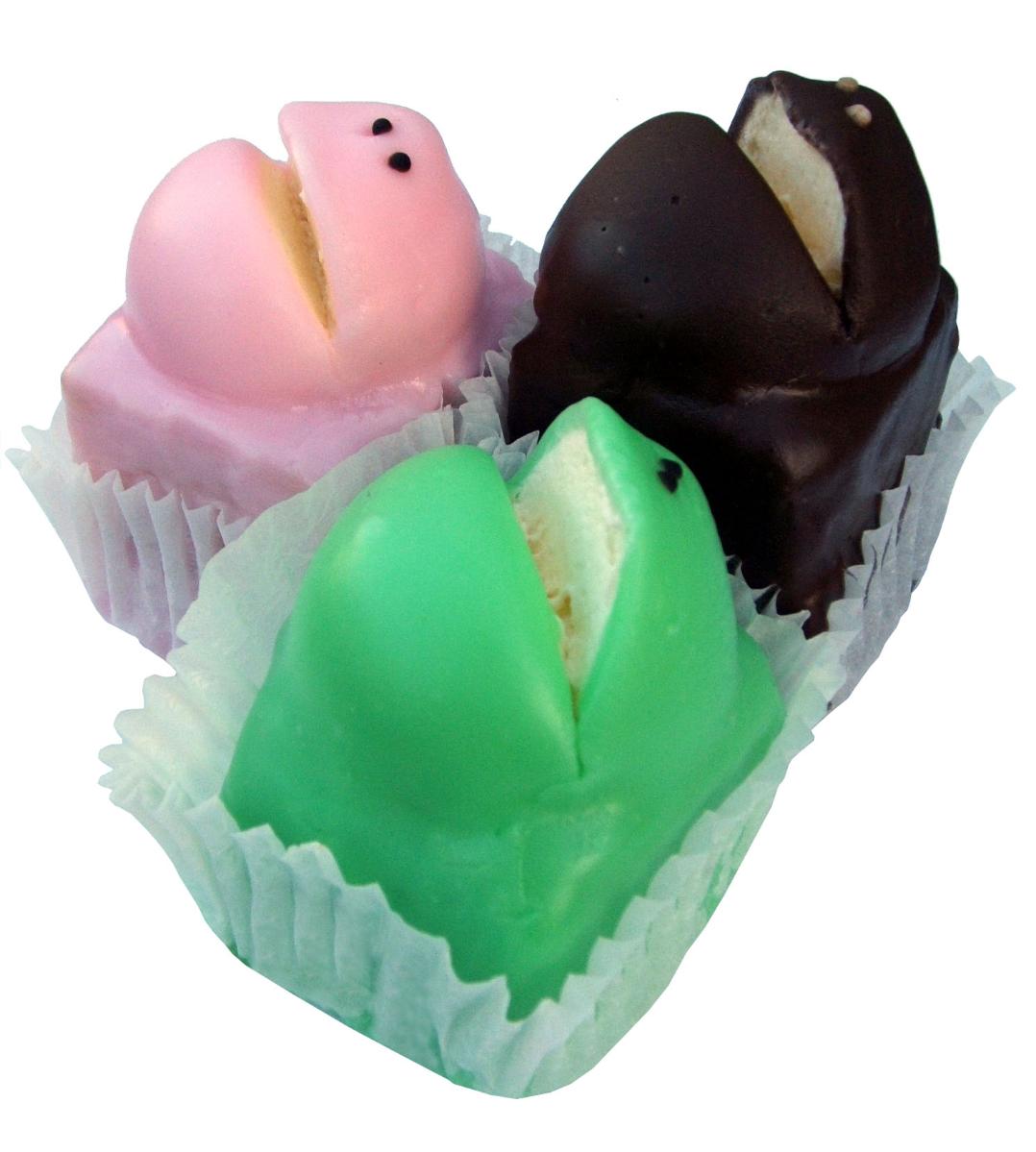
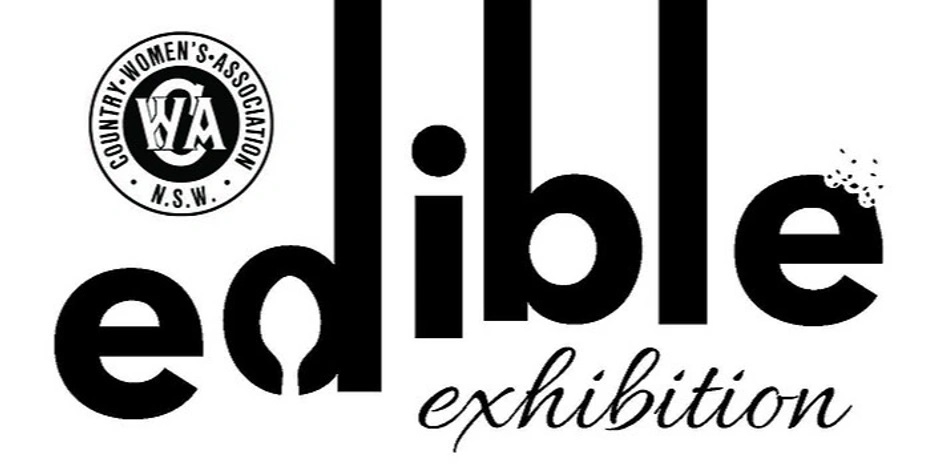 On Saturday 26th August Manly CWA are holding an Edible Exhibition at St Matthew’s Manly. It will be a celebration of Manly Branch of the Country Women’s Association throughout the last 100 years with an exhibition and sale of 100 different tea cosies and 100 aprons.
On Saturday 26th August Manly CWA are holding an Edible Exhibition at St Matthew’s Manly. It will be a celebration of Manly Branch of the Country Women’s Association throughout the last 100 years with an exhibition and sale of 100 different tea cosies and 100 aprons. - 25 April – The first Anzac Day Dawn Service is held in Albany, Western Australia.
- 28 April – Construction commences on the Sydney Harbour Bridge.
- 1 to 30 April – A uniquely dry month over southeastern Australia due to a persistent block sees the driest month on record over Victoria with only 1.54 millimetres or 0.061 inches and Tasmania with only 7.95 millimetres or 0.31 inches. Melbourne has its only rainless month since at least 1855.
- 1 to 31 May – Following on the record dry April, Tasmania's weather reverses so abruptly that May remains the state's wettest month since at least 1900 with a statewide average of 370.92 millimetres or 14.60 inches. The wet weather would continue for another eleven months so that May 1923 to April 1924 received a statewide average rainfall of 2,091.87 millimetres or 82.36 inches – the wettest twelve months on record over Tasmania.
- 28 August – Construction begins on the Provisional Parliament House in Canberra.
- 10 October – Telephone link between Sydney and Brisbane officially opened.
- 12 October – Cairns, Queensland is proclaimed a city.
- 25 October – Sir Walter Lee is defeated in a no-confidence motion, and Joseph Lyons becomes Premier of Tasmania.
- 31 October – The Marble Bar heat wave begins, which by 7 April 1924 will hold the world record for the longest number of consecutive days (160) in which a temperature above 100 °F or 37.8 °C was recorded.
- 1 November – The 1923 Victorian Police strike begins, with half of the Victoria Police force standing down over the use of labour spies. Rioting and looting takes place in the Melbourne city centre.
- D. H. Lawrence publishes 'Kangaroo', his first novel with an Australian setting. There is also a local connection here as many state some of the landscape descriptions are in fact from a visit to Narrabeen - see: Pittwater Summer Houses: 'Billabong' + 'Ocean House', Ocean Street, North Narrabeen - The House At The End Of The Road - Became Site Of North Narrabeen SLSC's 'Batchelor Club
- New South Wales wins the Sheffield Shield
- Bella Guerin, Australian feminist and suffragist passes away
- Manly CWA members visit Bilgola.
The frog cake is an Australian dessert in the shape of a frog's head, composed of sponge cake and cream covered with fondant. It was created by the Balfours bakery circa 1923, and soon became a popular treat in South Australia.
Jack Balfour, of Balfour's Bakery, is credited with introducing the Frog Cake after a 1923 trip to Paris, where French pâtisseries were making fondant-covered petit fours.
Originally frog cakes were available exclusively in green, but later brown and pink were added to the range. Since then other variations have been developed, including seasonal varieties (such as snowmen and Easter "chicks"). The frog cake has been called "uniquely South Australian", and has been employed in promoting the state. In recognition of its cultural significance, in 2001 the frog cake was listed as a South Australian Heritage Icon by the National Trust of South Australia.
The frog cake is a small dessert shaped to resemble a frog with its mouth open, consisting of a sponge base with a jam centre, topped in artificial cream and covered with a thick layer of fondant icing. The recipe today remains identical to the one employed when the cake was first produced in the 1920s.
When manufactured, large layers of sponge cake are combined and cut mechanically into shape, covered in the fondant, and the mouth is then formed with a hot knife. Fondant eyes of a contrasting colour are manually added to the head, and the completed dessert is presented in a paper cup cake pan.
As the cakes were widely imitated, Balfours registered the name and shape of 'Frog Cakes' as a trademark in 2001.
For decades they were available only in South Australia. However, Balfours was acquired by San Remo Macaroni Company in 2008 and now have a second factory in Sydney at Milperra. As a result, the cakes are now available in New South Wales, Queensland and Victoria.
Balfours began when Scottish immigrant James Calder and Margaret née Balfour opened a bakery at 130 Rundle Street, Adelaide in 1853. As Calder's bakery became very successful, he opened the City Steam Biscuit Factory in Twin Street, Adelaide in 1872.
Balfours became a household name and in 1867, when Prince Alfred, the Duke of Edinburgh, visited South Australia, James Calder was made the official biscuit baker for the royal visit, according to some anecdotes.
Around this time, Calder took on his nephew John Balfour and began trading as Calder & Balfour. Margaret Balfour died on 1 November 1887 and James Calder died two years later on 1 October 1889, aged 71. In the 1890s a new factory was built off Carrington Street.
From 1914 Balfours expanded their business to cake shops, cafes and tearooms. They acquired Jackman's Grand Cafe in the T&G Building in King William Street, and Balfour's Cafe was an Adelaide institution on this site for half a century.
In recognition of the significant contribution of then chairman, Charles Wauchope, the company was re-registered under the name Balfour Wauchope Pty Ltd.
In 2001, the state government provided funds to relocate the main production facility from Morphett Street to Dudley Park under a buy and lease back agreement. The company continued to struggle financially and faced imminent closure.
A more complete history is available in: https://balfours.com.au/TheBalfoursStory.pdf
So although this 1923 'cake' invention would not qualify - how about a cake shaped alike Bilgola Beach as it was in 1923? or even a cake shaped like Bilgola cottage as it was then?
WOMEN'S COLUMN.
SEASIDE CAMP.
On Sunday several members of the Country Women's Association, including Dame Alice Chisholm, Mesdames Hazlett, H. C. McIntyre, Kierie, Tindal, Arding Thomas, Osborne, E. Nyland, Fraser-Clark, Nest, Carpenter, Weaver, Chapman, Henderson, and Miss Warby Lugsdon, and many others representing the Cumberland branch, and the Manly and Mosman sub-branches of the association, paid a visit to the proposed site of the first seaside camp. Mr. W. B. Wearne, M.L.A. (Minister for Lands), also accompanied the party, as the area proposed belongs to the Crown. It is at Bilgola Bay, just north of Newport, and is one of the most beautiful situations Imaginable.
Mr. Wearne made the very generous offer of an area of about 30 acres, including the beach frontage, to the association. It was considered by some members that the site was too far from Sydney, but in view of the impossibility of getting a sufficient area nearer town, and the ideal character of the site, which would be reserved for all time for the benefit of the people out back, there was a general feeling that Mr. Wearne, offer should be accepted at once.
The Minister Invited the ladies present to attend at the Lands Department on Wednesday, at 2 p.m., when he would be in a position to Inform them if there were any other areas of Crown lands on the coast near Sydney which would be suitable for camp purposes. WOMEN'S COLUMN. SEASIDE CAMP. (1923, September 26). The Sydney Morning Herald (NSW : 1842 - 1954), p. 9. Retrieved from http://nla.gov.au/nla.news-article16095915
GETTING A SITE FOR THE SEASIDE HOMES
On the assumption that the better the day the better the deed, Dame Alice Chisholm accompanied by representatives of the central executive of the Country Women's Association, and by a fine representative from her own branch and the sub-branches of Manly and Mosman, went down to Bilgoola to inspect the site for the suggested seaside home.
There they were met by Mr. Wearne, Mr. and Mrs. Weaver, Dr. Richard Arthur and other representative people, and the idea was thoroughly gone into. The general impression seems to have been that the site, while in itself most lovely, was too difficult of access to serve the purpose, and so after a picnic lunch and a gipsy tea the company returned to town, having heard Mr. Weaver upon the subject, and having accepted an invitation from that gentleman to meet him at the Lands Office on Wednesday afternoon, at 2 p.m., when he would place before them all particulars of land available at Narrabeen, Collaroy, Manly and Maroubra. The ladies and gentlemen present express themselves as most grateful for the helpfulness, courtesy and keen personal interest evinced by the Minister. WOMEN IN THE COUNTRY AND THE CITY (1923, September 28). The Sydney Stock and Station Journal (NSW : 1896 - 1924), p. 1 (STOCK & STATION JOURNAL Magazine Section). Retrieved from http://nla.gov.au/nla.news-article128178558
COUNTRY WOMEN'S ASSOCIATION SECURES CROWN LAND FOR HOLIDAY HOMES
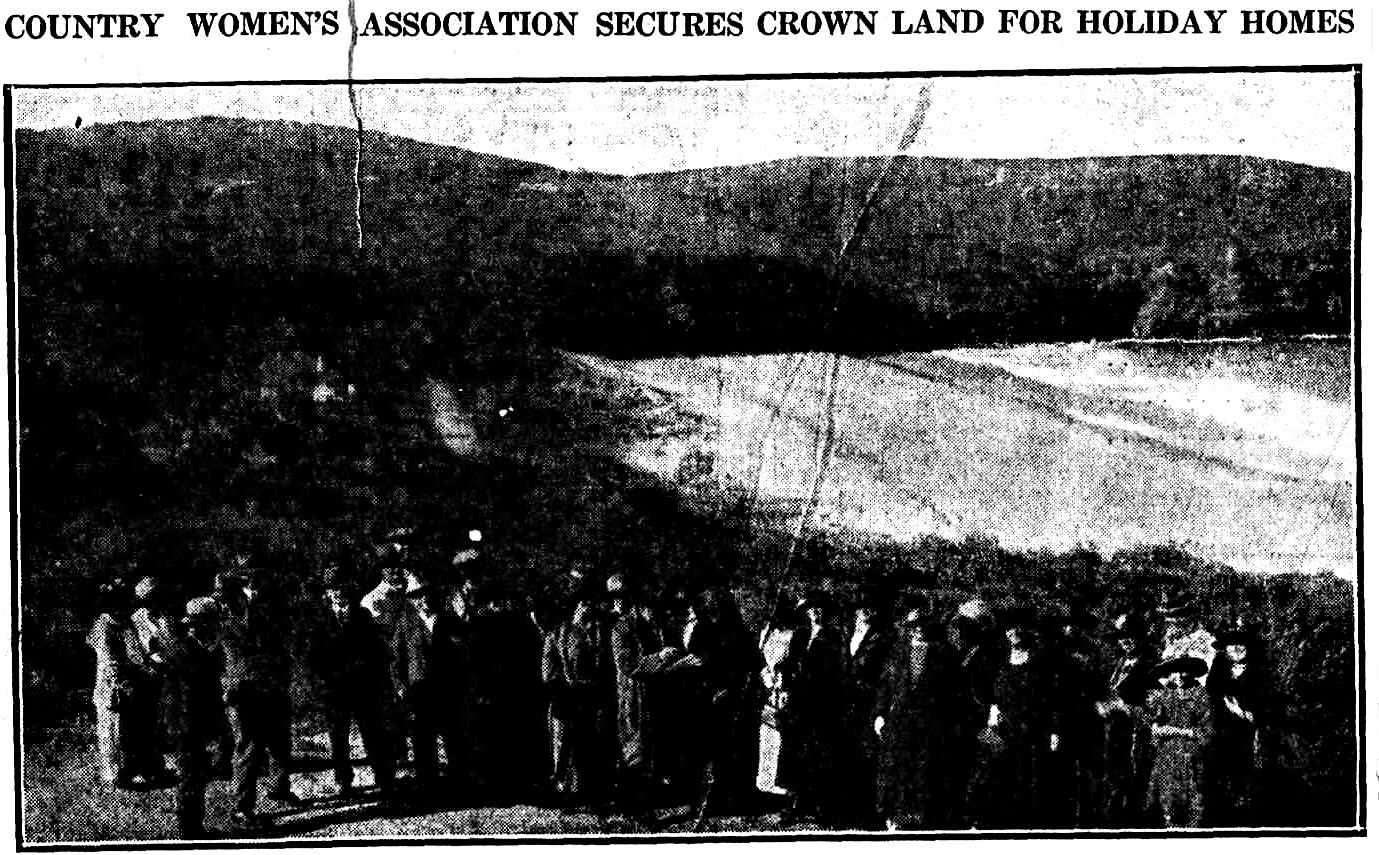
One of the most practical movements yet undertaken with the object of brightening the lives of the poor of the outback stands to the credit of the Country Women's Association. This is a scheme to erect cosy cottages on Government grand land so that every year they may be occupied for a few weeks by country families free of rent. A deputation, introduced by Mrs. H. C. Mclntyre, treasurer of the Association, and Dr. Arthur, waited on the Minister for Lands, Mr. Wearne, on Wednesday, made representations to him, and fully outlined the proposals.
The Minister granted three acres of Crown land at Griffiths Park, near Palm Beach, and the Association Intends to erect about six little homes on the ground, hoping in the meantime for aid from patriotic and humanely-principled men and women in the swelling of the funds for so laudable an object. A start will be made in the work of clearing the ground within a few weeks. The Voluntary Workers will assist.
The Association intends to establish similar holiday settlements at various resorts such as Coff's Harbor. It is endeavoring also to secure the grant of an additional 60 acres at Newport, nearby the residence of the late Lieut.-Colonel Oswald Watt. On this site, it, it proposed to erect homes to accommodate 60 families.
Representations are also to be made to the Railway Commissioners for a reduction in fares from the country to the several resorts. Lady Edgeworth David has suggested to the Association that the homes should be named in memory of the pioneer women of the outback — women who have done equally as much for the country as the men. The suggestion will be adopted. COUNTRY WOMEN'S ASSOCIATION SECURES CROWN LAND FOR HOLIDAY HOMES (1923, September 30). Sunday Times (Sydney, NSW : 1895 - 1930), p. 1. Retrieved from http://nla.gov.au/nla.news-article120536628
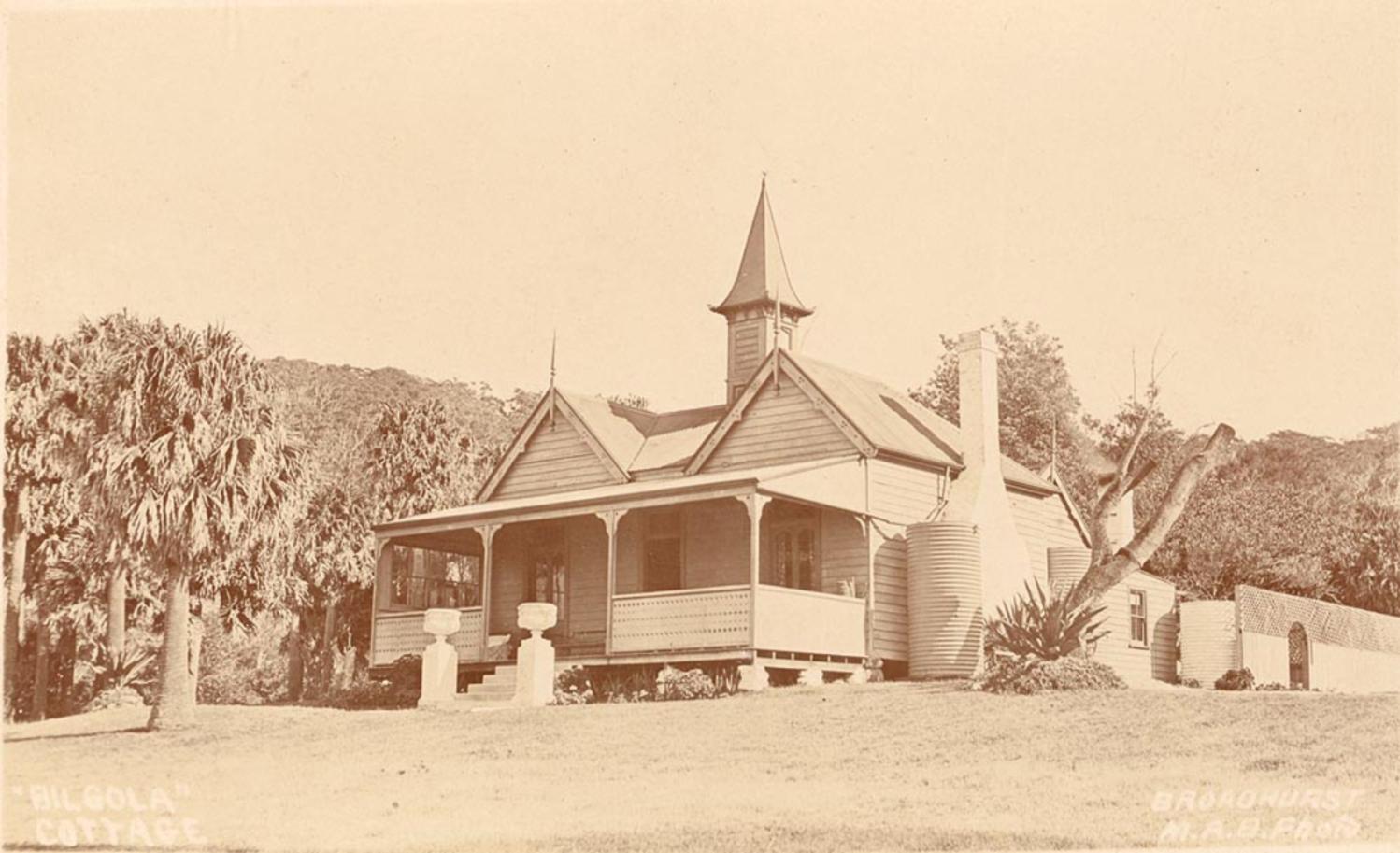
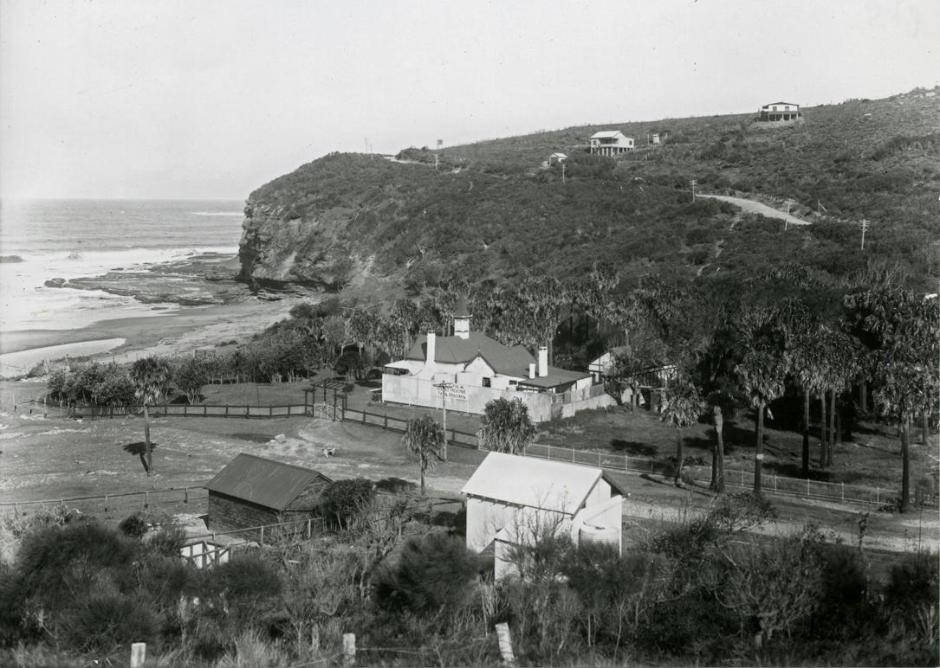
Bilgola House for Afternoon Teas! - circa 1925 - same picture as a State library of NSW GPO picture dated 1925 - picture courtesy Anne Spencer